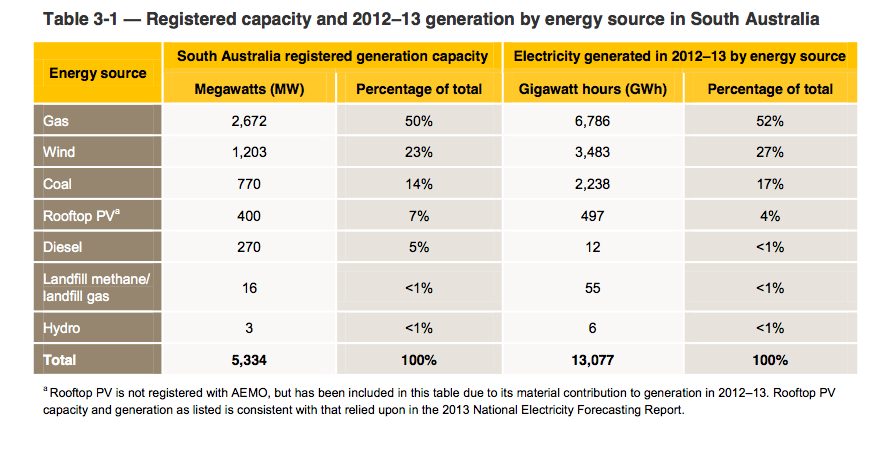 The state of South Australia is fast heading towards being a world leader in terms of renewable energy. A new report from the Australian Energy Market Operator (AEMO) believes that they will be able to provide 50% renewables well within the next decade.
The state of South Australia is fast heading towards being a world leader in terms of renewable energy. A new report from the Australian Energy Market Operator (AEMO) believes that they will be able to provide 50% renewables well within the next decade.
According to the 2013 South Australian Electricity Report (SAER) by the AEMO, one in five homes already has solar power installed on their roofs and wind supplied 27% of the state’s electricity needs in 2012/13. The amount of rooftop solar power is expected to treble in the next 10 years and with wind farms already planning expansion (or new build plans), wind alone could power almost 50% of the state within 10 years.
As per the chart below by the AEMO, solar and wind already produce around 31% of the state’s electricity needs in 2012/13.
Solar power is forecast to rise to as much as 1205MW’s by 2022 making it almost one is every two rooftops (in a high growth scenario). With the rapid uptake of solar power in recent times and falling prices, it is likely the solar will continue its popularity even with little to no subsidies.
Wind already has over 1200MW’s installed capacity and has another 270MW’s being built (under the Snowtown developments). This alone will take wind power generation to 33% of the state’s electricity needs. There is also another 3000MW’s waiting for contracts or finance.
If the forecasts are correct and government policy supports their expansion, South Australia will be the most advanced renewable, industrialised economy in the world. Its only real rival would be Demark who has a renewable energy target of 50% by 2020 that will consist of mostly wind power.
“Primary differences between the 2012 and 2013 forecasts include the deferral of the Olympic Dam mine expansion project, higher rooftop PV forecasts, and additional efficiencies achieved through building regulations,” states the report.
The report also forecast a decrease in demand from the grid as a result of the increased uptake of solar energy – about 0.1% decrease each year over the 10 years. This should save money on infrastructure upgrades that will no longer be necessary.

